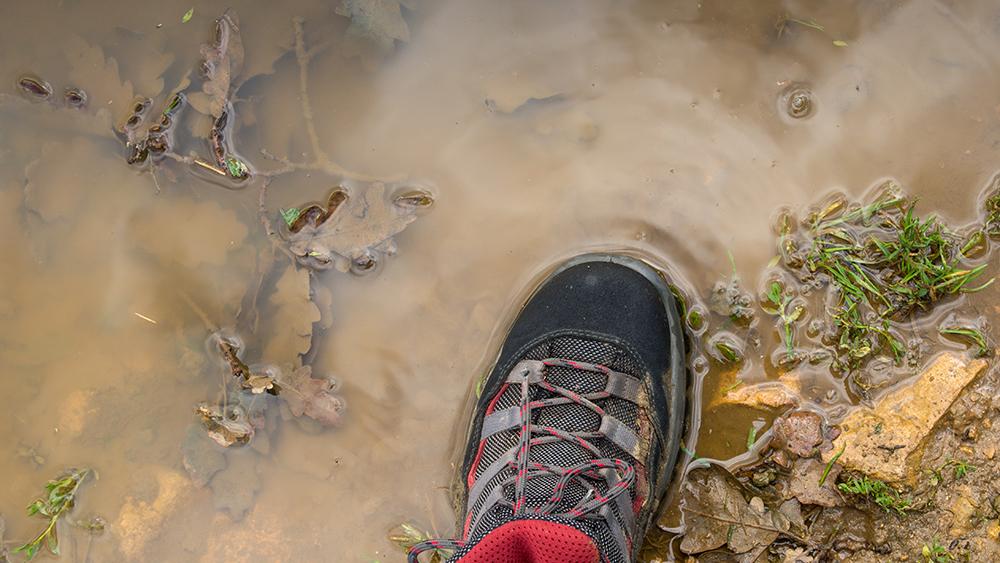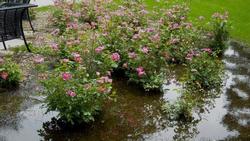Flood: Plant Stress in Extreme Wet Conditions

How wet, soggy soil can damage plants

Plants can tolerate flooding - up to a point. Most landscape plants can survive being submerged for about a week. Some plants are more tolerant of waterlogged conditions, but the longer the lack of aeration, the greater the chance of root death.
Soil erosion and deposits of additional soil and silt due to flooding can also damage plant root systems.
Above-ground signs of plant root dieback are droopy yellowing foliage, and dropping leaves. Exposed roots will be dark and may emit a rotting odor.
Stress takes a toll. Trees already stressed by drought are less able to cope with flood conditions and become more prone to disease and insect invasion.
Extended flooding can have long-term effects on soil quality. Soil microorganisms that help provide nutrients for plant use may die due to lack of oxygen. Soil structure may be altered as soil particles become compacted.
Spread of contaminants - floodwaters can potentially bring biological and chemical contaminants into the soil raising concerns about the safety of produce from flooded gardens.
What can be done after a flood?

Remove flood debris and move back soil that has shifted. Only a few inches of silt can kill a lawn or harm a tree.
Avoid walking on waterlogged soil to prevent compaction and further root damage. Stay off a boggy lawn.
Wait until the soil dries out before working with it in order to reduce additional compaction. Soil drying and exposure to sunlight and heat will allow air back into pore spaces and will kill most harmful microbes.
Give plants some time to recover. Cut back only physically damaged or obviously dead limbs. Even plants that have lost most of their leaves may have live stems and buds.
Remove contaminated material. Consider that any garden produce touched by floodwater may be contaminated and discard it. While the risk of contamination is low in residential areas, runoff from septic systems, pastures, or industrial areas can carry potentially harmful microbes and chemicals.
Test your soil. Submit a soil sample to a certified testing lab before replanting edibles if chemical contamination is suspected.
